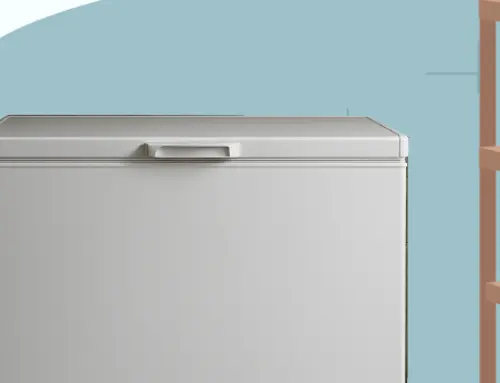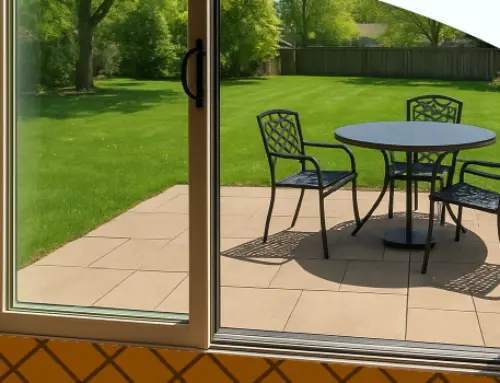What is a Rolling Blackout? Causes, How to Prepare and More
by Tyler Castle
6 min read

When it comes to the electricity that powers our homes, blackouts are an inevitable — though inconvenient — occurrence. This unexpected loss of power can last anywhere from a few minutes to multiple days, and is typically the result of damage to power lines due to inclement weather, isolated incidents, or from power grid failure.
Though many people have firsthand experience with blackouts like these, rolling blackouts may not be quite as familiar. While these outages may seem similar to blackouts in effect (i.e. loss of power), that is where the likeness ends. In fact, these blackouts play a key part in maintaining power grid health. So what exactly are rolling blackouts and how do they work? Keep reading to discover the answers to these questions and many more.
Why Are Rolling Blackouts Necessary?
Can Rolling Power Blackouts Be Prevented?
Blackouts, Brownouts, and Rolling Blackouts: What’s the Difference?
How to Prepare for Rolling Blackouts
What Are Rolling Blackouts?
So, what is a rolling blackout exactly? In short, these temporary power outages are scheduled by grid operators to prevent area power grids from becoming overloaded. Occasionally, external factors — for example, a heat wave or cold snap — lead to an increased demand for power that supply can’t keep up with. In these situations, excess strain placed on the power grid can result in widespread outages that may not only be lengthy, but also difficult to manage.
Rolling blackouts help prevent major outages by cutting power to a set number of customers, in a limited area, for a predetermined amount of time (usually one or two hours), alleviating pressure on the grid. Affected areas rotate to ensure that no one community is impacted by these outages for too long.
Why Are Rolling Blackouts Necessary?
The primary reason why rolling blackouts are needed is to ensure that energy providers can meet demand without putting excessive strain on power grids. The concept shares many similarities with other preventative measures such as controlled burns in forestry and bi-annual cleanings in dentistry, with the main goal being to maintain overall health — in this case, the health of the power grid.
Additionally, when widespread outages are prevented, emergency services are able to remain available during the type of extreme weather events that typically lead to increased energy demand.
Can Rolling Power Blackouts Be Prevented?
Because rolling blackouts happen as a result of circumstances beyond our control, the short answer to this question is no. Even though there’s no way to stop rolling blackouts from taking place, there are ways that you can help conserve electricity and do your part to reduce the strain on your local power grid. This includes:
- Turning off or unplugging appliances and other electronics when they aren’t in use
- Opting for energy-efficient appliances, such as Energy Star-rated models
- Using appliances with higher wattages during off-peak hours (which can also help you save money on your energy bill)
- Adopting energy-saving habits, such as air drying laundry, using LED light bulbs, and adjusting your thermostat
Blackouts, Brownouts, and Rolling Blackouts: What’s the Difference?
Blackouts, both rolling and unplanned, aren’t the only types of power disruptions. Brownouts are another entry on this list. Let’s take a closer look at what makes each of these three occurrences unique.
Blackout
As previously mentioned, this is an unplanned power outage that can be caused by a variety of different events, such as damage to power lines due to weather conditions or an overloaded power grid. These outages are unpredictable and can either be isolated or widespread, short in duration or lengthy.
Rolling Blackout
Similarly, a rolling blackout involves a complete disruption of the power supply. Unlike an unplanned blackout, this type is coordinated by power companies to help reduce grid strain during periods of excess demand and only affects a limited number of customers at a time. This practice helps prevent widespread outages and ensures that emergency services can remain operational.
Brownout
While both types of blackouts involve complete power outages, a brownout, on the other hand, is only a partial reduction of magnitude voltage. Brownouts can be planned or unintentional, with a planned event helping to alleviate an overloaded grid (similar to a rolling blackout) and an unintentional brownout the result of malfunctioning grid control systems, inclement weather, or spike in demand.
Where Do Rolling Blackouts Occur?
Anywhere that relies on a power grid to deliver electricity to customers could experience a rolling blackout. This is because the system can become overloaded under certain conditions — specifically ones that spur an increase in power use. That said, it’s more common for rolling blackouts to take place in areas that are prone to these conditions, such as regions that commonly experience extreme heat.
Since rolling blackouts are a possibility almost everywhere, it’s crucial to pay attention to local news outlets or communication from your power provider for any information about impending outages. To get a better idea about whether your area is at particular risk, the most recent iteration of the North American Electric Reliability Corporation (NERC)’s Long-term Reliability Assessment offers a more complete report.
And for staying updated on active disruptions to service, this national outage map is another reliable resource.
How to Prepare for Rolling Blackouts
The key to avoiding major inconveniences during a rolling blackout, or any kind of outage, is being prepared. That means coming up with a plan for what to do when the power goes out, before it goes out. As you’re putting your list together, keep the following tips in mind:
- Have a flashlight and extra batteries on hand. This ensures that you’ll have a backup light source in case your phone can’t be charged.
- Ensure power banks are fully charged. These will enable you to keep phones and laptops powered up and working.
- Stock up on water and non-perishable food items in case you lose power for longer than expected.
- Invest in a backup power source, such as a generator or storage-enabled solar panels, to keep the lights on even when the power goes out.
- Make sure any existing generators are ready to go by keeping them fueled up and in working order.
- Determine which appliances will be connected to backup power sources in advance to avoid making rushed decisions.
Even though they may seem like an inconvenience, rolling blackouts serve a crucial purpose in maintaining the overall health of the power grid and preventing widespread outages. And by staying prepared, making it through your next blackout can be as easy as flipping a switch.
Santanna Energy Services is a supplier of renewable energy solutions in the United States, providing services to Illinois, Indiana, Pennsylvania, Michigan, and Ohio. We provide a wide range of energy services and products to meet the needs of both residential and small business customers. Our mission is to provide innovative and cost-effective energy solutions that will help our customers achieve their energy goals. With over 35 years of experience, we are committed to creating life-long relationships by providing quality service to customers, communities, and employees.
Ready to explore your power options? View plans in your neighborhood.
Tyler is an experienced energy professional, having worked for Santanna Energy Services, for the past four years. He is passionate about renewable energy and believes that diversifying the energy grid is the key to a sustainable future. Tyler is dedicated to supplying consumers with the best possible energy solutions and works diligently to make sure that Santanna can deliver the highest quality service.







